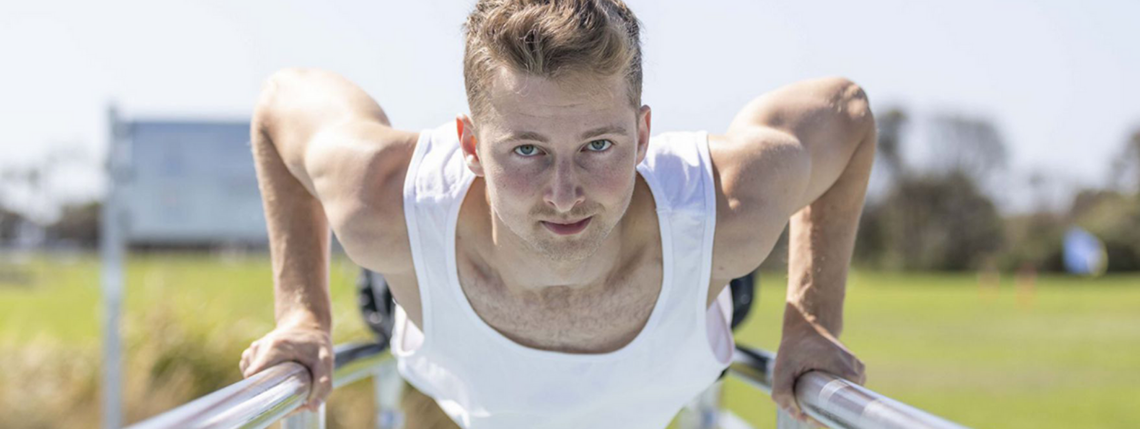The chest, made up of the pectoral muscles, has a strong relationship with the triceps. They work in a synergistic way, such that when the chest is activated during functional exercises, so too are the triceps. This is a natural extension of logic, as the will of the chest is controlled at the hands and through the arms.
Triceps, on the other hand, are more independent and can be more easily activated without pectoral activation. This is typically seen in isolated exercise patterns such as in the triceps extension exercise. In saying this, most natural movement patterns that involve the triceps also involve the pectoral muscles.
The main thing to note here is the contribution of these two sets of muscles. The pectoral muscles are bigger and typically produce dramatically more force than the triceps; however, this can be heavily influenced by palmer grip width.
Grip width changes the predominance of pectoral and triceps activation – or does it?
It is often the case that exercises done in a particular grip seem much harder. As discussed, the pectoral muscles are much bigger and so can generate much more force than the triceps. Hence, grip variations that limit the use of pectoral muscles are typically harder.
Muscles work best at optimal lengths due to the crossbridge cycle. This model fuses mechanical and biochemical principles to suggest that muscle force production is optimal when muscles are a certain length. If muscles are shortened or lengthened beyond this optimal length, force production can drop dramatically.
By placing the hands closer together or further apart, we are effectively changing the length of the pectoral muscles and minimally altering the length of the triceps. By placing the hands narrower than shoulder width, we shorten the pectoral muscles – and it would stand to reason that they would not be able to effectively generate force. This was the prevailing theory for some time at least.
A narrow grip was considered harder as the triceps, a smaller muscle group, needed to pick up the slack for the larger pectoral muscles. However, more recent work suggests that both triceps and pectoral activation is greatest when push exercises are completed with a narrower grip. These studies, however, do not suggest the proportion of activation between pectoral muscles and the triceps relative to each other.
It also seems the situation is complicated by a third player – the rotator cuff muscles – which seem to be engaged more in wider palmer positions, and which may take away some load from both the triceps and pectoral muscles during wide grip push exercises.
Summary
Muscles work best at particular lengths and the triceps and pectoral muscles are no different. The two sets of muscles work in sync when completing push exercises and it has been thought for some time that the narrower the grip, the more triceps engagement is achieved; the wider the grip, the more pectoral engagement is achieved.
However, the latest scientific studies actually suggest that both pectoral and triceps activation is greatest in narrow grip push exercises. The discrepancy between these findings and difficulty of the exercise is unclear. Some researchers suggest this may be attributed to external players, such as the rotator cuff muscles, rather than the pectoral muscles struggling to generate force at a less-than-optimal muscle length.
Reference
https://www.ncbi.nlm.nih.gov/pmc/articles/PMC4792988/, accessed on 29 June 2021.
Author Bio:

Vic Vale is a Melbourne-based personal trainer, calisthenics athlete and the founder of https://www.streetworkoutstkilda.com/ and https://www.liquidchalk.shop/. He has a passion for bodyweight training and the art of movement.







